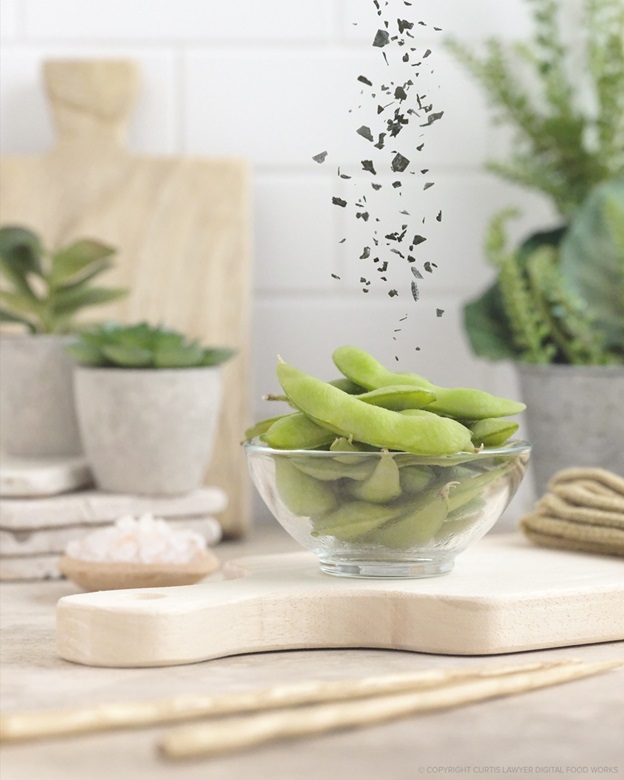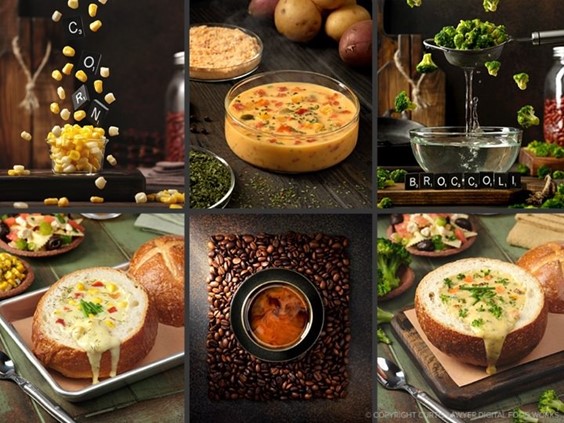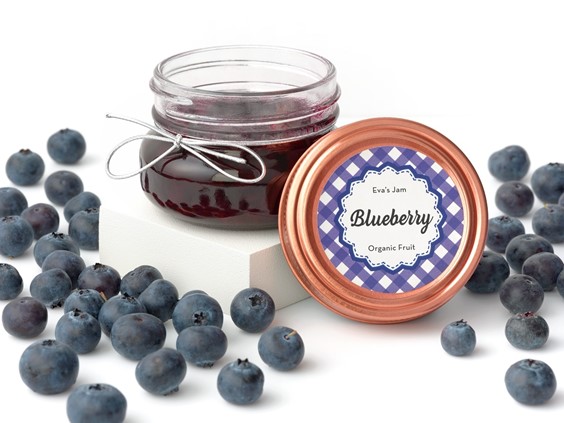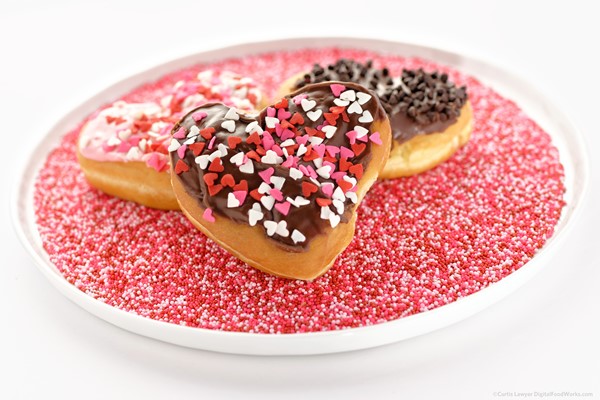Freezing Black Cyprus Salt in Mid-Air, Using A Continuous Light
October 20, 2020Food Photography
 Normally, I use strobe lights (aka "off camera flash") to light my food, beverage, and product photos. Strobe lights (together with camera settings) are powerful enough to cancel out most ambient light in any room, and allow the scene to be illuminated by only the strobes. They offer powerful, very short busts of light.
Normally, I use strobe lights (aka "off camera flash") to light my food, beverage, and product photos. Strobe lights (together with camera settings) are powerful enough to cancel out most ambient light in any room, and allow the scene to be illuminated by only the strobes. They offer powerful, very short busts of light.A couple of people have asked about "freezing falling things" in a photo… but they are working with continuous light — which is a little different. When using a continuous light source — freezing things is going to come down to shutter speed.
Our scene here is a "daylight kitchen counter" with a small bowl of edamame beans and some Black Cyprus Flake Salt that is being sprinkled over the top of the bowl.
One small asterisk to remember here, is — everything is different than everything else. What I mean is, Black Cyprus Flake Salt is pretty heavy and dense, when compared to something like powdered sugar — so what you're trying to capture in mid-air is just as important as knowing what your field of view is (angle-wise). Unless you're using the same camera, lens, and sea salt — the actual settings are going to fluctuate, a little bit.
Let's take a quick look at the lighting setup. It's a pretty simple one-light deal, with a single 120 watt led light. It's very difficult to talk about something like a 120 watt light in absolute terms — they are not all built the same when it comes to the actual amount of light they're putting out… so saying something like a 120 watt light with a starting setting of 65%, is kind of useless.
The light is positioned to the right of the main subject (bowl of edamame) and pointing at a 42" square diffusion panel — basically, it becomes a 42" wall of light. To the left of the subject , there's a single white bounce card, that's roughly 24" x 36". It's worth noting here, that the background and table surface are white (mostly), so those surfaces are also bouncing light onto the subject.
Without the single led light turned on, the scene is pretty dark. There's a couple of standard 100 watt light bulbs way up in the ceiling, but they're only providing "basic room light" — which is not nearly enough light to properly expose the scene. It's totally enough light to see what you're doing on the table, but it really has no impact on the final photo. All of the light you're seeing in the final photo, is coming from the 120 watt led light.

On the left is just the ambient, overhead light in the room. On the
right, a single 120 watt continuous led light is set at around 65%, and
shining through a 42" diffusion panel.
Another quick side note — an ISO setting of 6400 is way higher than what I normally use, when I'm shooting with flashes. Continuous LED lights aren't nearly as powerful as strobes, so in order to properly expose the scene, I really had to push the limits of what a digital camera is capable of.
In all photos, I kept the Aperture set at f/10 and the ISO at 6400. When I increased the shutter speed, I also increased the power of the light, to keep the scene (approximately) at the same exposure.
First up, a shutter speed of 1/125th of a second — and the salt flakes are just a blur. Those little suckers are heavy, and actually, quite large when compared to something like powdered sugar, which kind of wafts down like a leaf falling from a tree. The salt was more like pelting rocks at those poor defenseless edamame beans.
Making the shutter twice as fast — didn't help that much. At 1/250th of a second, the salt is still a blur, but it's getting a little better.

On the left, the camera is set with a shutter speed of 1/125th of a second. On the right, the camera is set with a shutter speed of 1/250th of a second, or twice as fast.
Once I got up to 1/1000th of a second, you could start to see the salt flakes individual shapes, but there was still a little too much motion blur to see the texture of the salt, or a hard edge.
Another quick side-note... for something like powdered sugar — a shutter speed of 1/1000th of a second might be fast enough to make it look frozen in mid-air. A single spec of powdered sugar is very small and much lighter than a mineral rich flake of salt. (Getting into a discussion about the buoyancy effects of air on the measurement of mass and density — is beyond the scope of this article.)
It's only once I got all the way up to 1/4000 of a second — that you could start to make out the hard edges and even see some texture in the individual flakes of salt. Yay!!!

Here is a comparison between two of the faster shutter speeds. A shutter speed of 1/1000th of a second is on the left, and a shutter speed of 1/4000th of a second is on the right.
So why is all of this a little easier when I use a strobe light? With a powerful strobe light — the flash duration can actually be much shorter than the fastest camera shutter speed. When I'm trying to freeze something like powdered sugar in mid-air, and I'm using one or more flashes — I can set the flash duration to 1/8000th of a second. If the scene is 100% being lit using the strobe flash (i.e. there's no ambient light at all) — it doesn't matter how long the camera shutter is open. The speed of the burst of light produced by the flash, will freeze most all motion in the scene.








